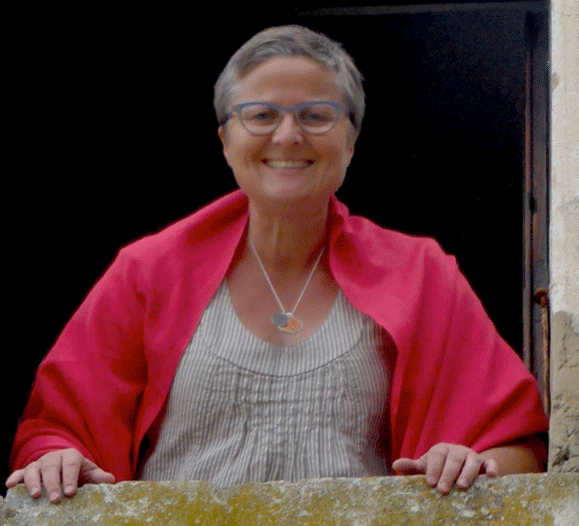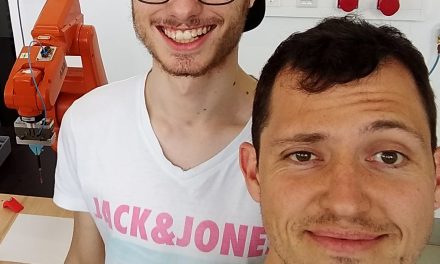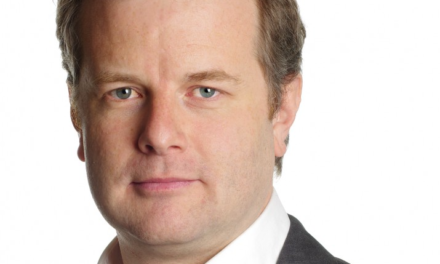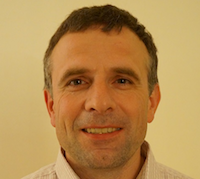Regina Rowland, certified biomimicry expert
and professor at the University of Applied Sciences Burgenland
All species living and breathing on this planet have gone through billions of years of evolution to be here today. Each of them having developed and mastered successful strategies to live within the operating conditions on the planet. The biomimicry thinking design process is one way that guarantees a thorough investigation into the patterns and strategies of nature, holding the promise for successful emulation into human systems, says Regina Rowland, certified biomimicry expert and professor at the University of Applied Sciences Burgenland in the Departments of International Business, New Energy Systems, and Energy & Environmental Management.
Interview by Julia Weinzettl
What is biomimicry?
Regina Rowland: Biomimicry is a bio-inspired design process – BID. Bio-inspired design processes and concepts have been used for half a century. The genre originated in the engineering world, where engineers noticed that they could learn from nature. Biomimicry itself did not emerge from the technology field, it was created by two founding scientists, Dana Baumeister and Janine Benyus, who developed what is now called Biomimicry 3.8— a for-profit consulting business, as well as the biomimicry institute—a non-profit organization focused on teaching Biomimicry.
Jane Benyus
Biomimicry is a combination of system thinking, design thinking, biology and the disciplines from which a design challenge emerges.
Biomimicry thinking is a design process that yields sustainable solutions as opposed to any bio-inspired design process whereby nature is mainly used as a model but sustainability is not mandatory.
Regina Rowland: That´s right, biomimicry has a four-step design process: scoping, discovering, creating and evaluating. These stages are not new to the design process, however, a unique difference lies in the origin where we obtain the information.
Nature is an incredibly vast field and to research nature’s genius thoroughly is an enormous undertaking.
Regina Rowland: It is, but the sources are literally endless, in fact, we estimate that we have 30 to 100 million species and that´s just an estimation because we could only identify 1.8 million so far. There are a lot more strategies to survive and thrive on this planet that we don´t even know yet.
How do you cope with so much information?
Regina Rowland: Working with multidisciplinary teams is necessary in biomimicry. I am a process designer, I´m not a biologist, ecologist or specialist in any of those science fields. I know how the process works, I take people through the process and I learn a lot about biology as part of working with other people. Working with a biologist or ecologist is always a must in this process. The process itself allows you to focus on the specific information that you need for the development.
Could you outline the process?
Regina Rowland: There is the Biomimicry Framework and the Biomimicry Thinking Design Process. The framework has three essential elements:
- (Re)-connect: means spending time in nature, you go out and explore how nature works. Specific activities, such as iSites (structured ways of observing nature) help to organize the outdoor experience.
- Ethos: is Biomimicry’s distinguishing element from other bio-inspired design processes and the underpinning philosophy of biomimicry. Biomimicry is based on 26 live principles—the patterns of nature to survive and thrive on this planet. These principles have been developed by a group of international scientists over a number of years.
- Emulate: is the Biomimciry Thinking Design Process that includes four phases: scoping, discovering, creating and evaluating.
The Biomimicry Thinking Design Process starts with contextual research about the problem state. How is the design challenge created? What is the context in which it arises as a problem? In scoping we apply system thinking and system mapping. By using a big working wall we examine all the interacting relationships to find the a proper entry point to the system. We also define our desired impact and a project vision.
What is the next step?
Regina Rowland: We need to define what our design is supposed to do. The word ‘to do’ is really important here – it´s an action verb (in particular the function the design should fulfill). Usually in the design world we talk about what a design is going ‘to be’ – which is a preconceived idea of a thing, but you can´t study a thing in nature. Nature is active and dynamic.
Then we enter the discovering phase where scientific research takes place. We twist the question around to find the very same function that we defined in the scoping phase in organisms or whole ecosystems. A question that we address could be for example: Who or what jumps in nature? What kind of mechanism does a grasshopper have built into its muscles to be able to jump so high? We look for the strategy and mechanism of the jumping part and analyse the components. A good place to start researching is www.asknature.com, for example.
But engineers, designers and biologists don´t necessarily speak the same scientific language?
Regine Rowland: No, during the research process we need to “biologize” the research question in order to find scientific info and then “un-biologize” the answers so that everyone who participates in the next step can be adequately informed. For instance, you have to figure out what movement means in biology and how you can break the concept down into its parts. Then you boil down to the key elements of your research findings. In other words, we ‘walk across the function bridge’, meaning we start with the function question in the human system, walk over to biology and learn the secrets of nature concerning the particular function and then walk back into the human world.
Thereafter we enter the creating phase which may include additional participants so that we have multiple and fresh perspectives at the design table to create the emerging prototype which must meet all the identified design criteria.
Then, in the evaluating phase, the prototype (which may be a thing, a process, or a system) is assessed against all of the 26 life principles of biomimicry. Most of our human-made inventions are not as sustainable or regenerative as nature would create them. We might reach only 60 to 75 percent of these principles even when we try very hard. We do the best we can, but in the end we have a bunch of gaps that need to be closed with the help of experts or other developments.
Do you have examples of biomimicry products that are on the market and have met a sufficient percentage of the 26 principles?
Regina Rowland: There are many great examples of nature-inspired designs, most of which, however, would not meet all of the 26 life principles. One famous example for developing a “form” is the Shinkansen train in Japan. Before it was developed, the trains in Japan were bullet trains which had big bullet shaped balls in the front the engine. When they came out of a tunnel they made a loud noise because they were pushing pressure waves in front of them and when the pressure was released it made a terrible loud sound. The engineer who was ordered to fix the sound problem also was a bird watcher. He noticed that the kingfisher, a bird, dives really fast into the water without making a splash. The reason for this lack of noise is the particular shape of its beak. This shape was used to solve the sound problem of the trains as the front cabin was designed to match it. Still, it took the team many experiments and years of development to arrive at the production phase. asknature.org/idea/shinkansen-train

Kingfisher/Shinkansen Train
Another example of emulating nature’s forms is Arnold Glas, a development from a German company. Arnold Glas innovation solved the problem of birds flying into windows of high-rise buildings. 150 000 birds die, every day, in Europe alone because they see reflections of sky in the windows. Researchers went into the woods and noticed that humans walk through spider webs hanging between trees because they don’t see them, contrary to birds and bees that do not collide with the webs. The researchers figured out that there is an ultra-violet fiber woven into the web with a spectrum of light that birds and bees can see, but humans cannot detect. They developed a glass that contains ultra-violet fibers, invisible to the human eye, but detectable by birds. This innovation solved the problem to a very high degree, up to 90some percent. http://arnold-glas.de

One example for emulating a process is Calera cement, a California company. They developed a cement that is non-toxic and cures using CO2, unlike the traditional way which includes toxic materials. In this innovation, the developers mimic the way sea creatures build solid constructions, such as corals that are created when calcium and other minerals are sequestered from the seawater and used to create very strong structures at normal temperatures, without applying additional pressures or adding other toxic components. http://www.calera.com/

www.reginarowland.com
get in touch: regina@reginarowland.com
About:
In 2016, after having spent 30 years in the US, Regina Rowland moved back to Europe to be closer to her family, and accepted a professorship at the Austrian University System of Applied Sciences where she is engaged in transdisciplinary research and in teaching management-, engineering-, and eco-design students about leadership, organizational transformation, corporate social responsibility, intercultural communication, branding, project management, design-driven and bio-inspired innovation, and systemic sustainability.Her family comes from a small village at the Austro-Hungarian border, Mörbisch at the Neusiedlersee where she has an atelier for her creative work. Her last assignments in the US included a professorship in Design Management at the Savannah College of Art and Design (SCAD), and she lived on Tybee Island, a very interesting sub-culture in the South East of the US. Regina is a bicultural, binational, and bilingual transdisciplinary scholar–practitioner bridging design, business, and technology, and co-creating conditions for nature-inspired innovation. Her areas of expertise in teaching and consulting are: Strategy and Systemic Sustainability, Leadership Development and Organizational Transformation, Design-driven Innovation and Biomimetic Design, Curriculum and Program Development. She is one of the few certified biomimicry experts residing in Europe.







